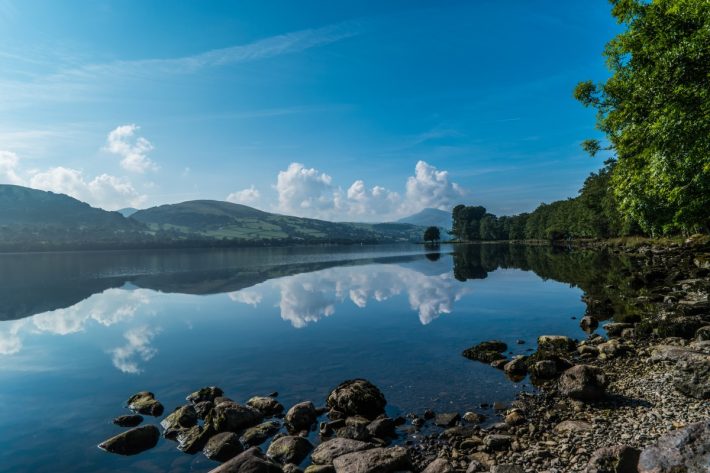Why do protected areas matter?
At the British Ecological Society, we have been working with experts to produce a report looking into what the pledge to protect 30% of land and seas by 2030 means for nature recovery in the UK. We asked one of the report authors why we should all care about the target.

Imagine all the water in the world was controlled by one large tap.
Now imagine that that tap will be turned off next week.
There would be chaos, and amongst stocking up on bottled water and asking when the tap would be turned back on again, some people may be trying to work out how to ensure this tap never gets turned off in the first place.
This imaginary tap is very much representative of the climatic and ecological crises that we are facing today. However, instead of being given a week, we have agreed on eight more years in which to address this impending issue. The UK government has pledged to protect 30% of our land and seas by 2030 to support the recovery of nature, otherwise known as the 30×30 target. A suite of area-based conservation measures, including protected areas (PAs) and other effective area-based conservation measures (OECMs) will be essential towards achieving this target. Failure to achieve this could lead to an irrecoverable decline in biodiversity, and losses of ecosystem functions, such as wave regulation or woodlands that can slow surface water (the loss of which could lead to widespread flooding and landslides). Such functional losses are homogeneous to our imaginary tap being turned off forever!
Condition of protected areas
When we consider the state of a PA, we are referring to the degree by which they are able to meet their conservation objectives. These objectives are either biological or geological, and their condition can indicate PA performance. Quantifying the state of PAs forms a part of Common Standards Monitoring, and offers a useful comparative between UK PAs.
Currently only 43-51% of sites designated with the primary purpose of nature conservation and a high level of protection (i.e., UK Tier 1 sites such as Sites of Special Scientific Interest, Ramsar sites, Special Areas of Conservation and Local Nature Reserves) are in favourable condition. Furthermore, when looking at only the types of sites that fall into the IUCN categories classified as having the strictest levels of protection, as little as 4.9% of UK land can be considered effectively protected. This is shockingly low when we have so little time to meet 30×30, and highlights the importance of increased monitoring, resources and awareness for PAs.
Biodiversity inside protected areas
There are a myriad of studies that indicate that PAs maintain higher species richness than unprotected sites. This is the case because of their historic establishment in areas of high biodiversity, as well as the efforts that go into their management and maintenance.
However, there is room for improvement. Not only do we not know enough about biodiversity trends within PAs due to limited monitoring; there is also a data shortfall about the relative abundance and distribution of UK protected species. To successfully protect species, PAs need to widely cover species distributions, and currently UK Tier 1 sites are representative of just under 10% of terrestrial species habitat ranges[1].
What needs to happen to effectively meet 30X30?
If this was a numbers game alone, meeting the UK government’s goal of 30% protected land and sea by 2030 would be easy – indeed we are already at 28% protection on land and 38% at sea. It is worth noting, however that this figure for protection on land includes ‘protected landscapes’ which were primarily protected for purposes other than nature.
Now we come to the word effective, and designation alone does not make for effective PAs. This is where the challenge begins – with nature’s recovery from anthropogenic impacts. We must expand, improve and connect existing PAs to each other, as well as the wider landscape; increase monitoring and enforcement; communicate the importance of sustainable environments for society. Not only do we need awareness of the complexity of the issue and the current lack of resources, but also awareness of the socio-economic benefits that can be gained if we effectively achieve 30×30.
The British Ecological Society report on PAs will be launched on the 22nd of April 2022 and examines the ecological evidence on what is necessary to achieve the goal of effectively protecting 30% of UK land and seas for nature by 2030. Join our launch event to find out more!
[1] Boyd, R. Hassall, R. Pescott, O., and Isaac, N. J. B. (unpublished). Representation of habitat specialists in the UK’s protected area network.
Like what we stand for?
Support our mission and help develop the next generation of ecologists by donating to the British Ecological Society.